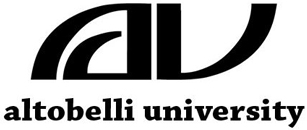2105.0322 MAINTAINING SALON LICENSE
2105.0322 MAINTAINING SALON LICENSE.
Subpart 1.
Scope.
The requirements in this part apply to all salon licensees.
Subp. 2.
Unlicensed persons.
Salons must not employ or allow unlicensed persons to perform any board-regulated service in a salon, or allow an unlicensed person to provide regulated services without compensation.
Subp. 3.
Compliance.
The licensee must comply with all applicable provisions of Minnesota Statutes and Rules.
Subp. 4.
Maintain insurance.
The salon must maintain any required workers’ compensation insurance and professional liability coverage as required by Minnesota Statutes, section 155A.29, subdivision 2, for the salon and salon employees. If the salon leases space to any licensee, or contracts for services with a licensee, the salon must ensure that the licensee is covered under the salon’s professional liability insurance or that the licensee maintains current professional liability coverage meeting the salon requirements.
Subp. 5.
Salon premises.
Cosmetology, esthetician, and nail services must not be provided in a place other than a licensed cosmetology salon, esthetician salon, nail salon, cosmetology school, or as otherwise provided by this chapter.
Subp. 6.
Change of location.
A salon license must not be transferred when the salon moves to a new location. The salon must apply for a new salon license and has 60 days after a move to become licensed according to part 2105.0310. If a new license has not been issued by day 61, the salon must cease operations until a license is issued. A mobile salon moving to a new vehicle or new mobile structure must not begin operating in the new vehicle or new mobile structure until the new mobile salon has been issued a license.
Subp. 7.
Change of name.
This part applies only to salon name changes and does not apply to changes of ownership. The board must reissue the salon license in the new name under the same license cycle after the salon owner has met the requirements of this subpart. Within 60 days of the name change, the salon owner must:
A.
submit a salon name change form to the board;
B.
provide legal documentation of the name change and any other documents the business is required to file with the secretary of state under state law because of the name change;
C.
provide a certificate of insurance showing the salon’s new name for professional liability insurance;
D.
provide a certificate of insurance in the new salon name for workers’ compensation insurance if applicable; and
E.
pay the fees required in Minnesota Statutes, section 155A.25.
Subp. 8.
Change of owner.
A salon license must not be transferred when the salon is sold, or when a corporation owning a salon is sold. The salon must apply for a new salon license and has 60 days after change of ownership to become licensed according to part 2105.0310. If a new license has not been issued by day 61, the salon must cease operations until a license is issued.
Subp. 9.
Change of business structure.
A salon license must not be transferred when the business structure of the owner is changed. The salon must apply for a new salon license and has 60 days after the change of business structure to become licensed according to part 2105.0310. If a new license has not been issued by day 61, the salon must cease operations until a license is issued.
Subp. 10.
Change of DLSM.
The salon owner must inform the board in writing within ten business days of the departure or resignation of the DLSM. The salon has 60 days from the date of the change to register a new DLSM with the board.
History:
Published Electronically:
March 20, 2017
